Fallout: Spies, Superbombs, and the Ultimate Cold War ShowdownDecember 2022
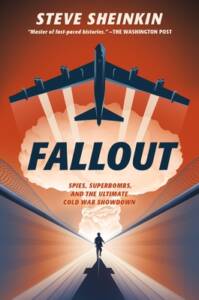
Sheinkin, Steve. Fallout: Spies, Superbombs, and the Ultimate Cold War Showdown. Roaring Brook Press: New York, 2021.
This history of the Cold War reads like a novel (but you can’t make this stuff up) and focuses on the main players at various crisis points in the era. From post-WWII spy trade to prisoner swaps to the Cuban Missile Crisis and the Berlin Wall, it’s all thrilling. Includes photographs, source notes, bibliography, and index.
It’s a must-have for any school serving students Grade 7 and up. Would also recommend to adults who will appreciate the overlap with other books and movies.
Dewey: 972.9106 Interest Level: Grades 6 – 12
Awards and Reviews: ALA Notable Children’s Books; Booklist starred, Bulletin of the Center for Children’s Books starred; Horn Books starred; Kirkus Reviews; New York Times; Publishers Weekly starred; Sibert Award, 2022; School Library Journal starred.
Younger readers might like: Cold War Correspondent (Nathan Hale’s Hazardous Tales, Book 11) by Nathan Hale
Fiction pairing: A Night Divided by Jennifer Nielsen
On the web: Find details on virtual tours of the Spy Museum!
Watch: Bridge of Spies (2015) from Stephen Spielberg. Rated PG-13.
Nonfiction Book Archives
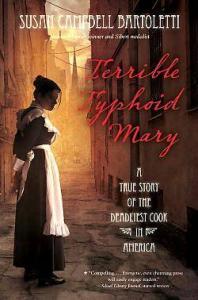
New York Houghton, 2015
Susan Campbell Bartoletti is a Newbery and Siebert Honor author, so it isn't a surpise that this book about Typhoid Mary is thoroughly researched and as engaging as a novel. We know we are in for somthing good when the prologue warns off the squeamish and encourages the rest of us with unperfect germ fighting habits to read on!
Terrible Typhoid Mary pulls us into the world of an early 20th Century servant in a wealthy household by sketching out the marks of a "good servant" and matching those guidelines with the reputation of a skilled cook named Mary Mallon. Mary is trustworthy, hard-working, knows her place and the proper behavior expected of a cook. She is a good servant. Unfortunately, she is also spreads Typhoid to every household in which she works. To Mary, and many others of her day, germ theory was hightly suspect and the idea that she, a robustly healthy person, could be carrying and spreading typhoid fever while showing no symptoms, seemed out of the question.
We meet Mary Mallon in Oyster Bay, New York when she is hired to cook. Some weeks later, several members of the household fall ill with typhoid fever, but the authorities cannot determine how it came into the household. George A. Soper, Ph.D., a Columbia-educated sanitation engineer and epidemic investigator, noticed the disappearance of the cook and set about tracking her down. When Mary was located, Dr. Soper and his colleague, Dr. Josephine Baker, had the unpleasant task of confronting Mary and convincing her that (1) she was likely a healthy typhoid fever carrier; (2) she had been making people sick for years; and (3) she must be tested. It did not go well. Readers might become frustrated with Mary's obstinant reaction, but still sympathize with her plight and her lifelong struggle with the public health authorities and the media.
Terrible Typhoid Mary is objective without being dry, and exciting without resorting to sensationalism. Bartoletti expertly fills the gaps in Mary's documented life with interesting background information and some educated speculation. This story could be a jumping off point for a discussion on the line between personal freedom and public safety. It is written for middle-school readers, but would be appropriate for readers grade 4 and above. The photographs, notes, bibliography, and index round out this excellent choice for any elementary or jr. high library. The audio version of the book is terrific and an excellent companion to the print version for struggling or ELL students. It's a must have for the germophobe in all of us!
Dewey: 614.5 Interest Level: Grades 4-8
Awards and Reviews: Booklist starred; Publishers Weekly; Bulletin of the Center for Children's Books; School Library Journal starred; Horn Book Magazine starred; Voice of Youth Advocates (VOYA) starred.
Younger Readers might like: You Wouldn't Want to Meet Typhoid Mary! by Jacqueline Morley.
Older Readers might like: Fatal Fever: Tracking Down Typhoid Mary by Gail Jarrow
Fiction Pairing: Fever 1793 by Laurie Halse Anderson
Audio: RadioLab's The Most Horrible Seaside Vacation at http://www.radiolab.org/story/169882-typhoid-mary/.
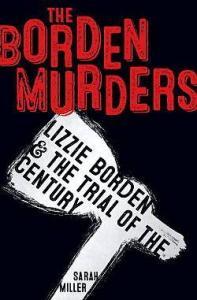
New York: Random House, 2016
Miller, Sarah. The Borden Murders: Lizzie Borden & the Trial of the Century. New York: Random House, 2016.
In the spirit of Halloween, October's nonfiction book is a truly gruesome story! Remember this?
Lizzie Borden took an axe/ Gave her mother forty whacks/ When she saw what she had done/ She gave her father forty-one.
Lizzie herself had to listen to this jump rope ditty sung outside her own window throughout her life, for it was already being sung by children of her own time. Since then, the legend of Lizzie Borden with all its movies, books, and even musicals, has made it easy to forget that she was a real woman.
It all began on an August morning in 1892, when 32-year old Lizzy entered the sitting room of the family home and discovered her father's bloody body on the sofa. Her stepmother's body was found a little later in an upstairs bderoom. They had both been brutally beaten about the head. Lizzie quickly became the prime suspect, and this true crime story is off and running.
The Borden Murders is purely factual, and surpisingly readable, as it takes us through the events of the murder investigation, subsequent hearings and trials. That might sound a little dry, but it is not. Helpful sidebards describe important details and background information that give the events in the story context. Subjects on everything from the layout of the house to the difference between a slop pail and and chamber pot (look it up!), that give insight into the live and times of the Borden family. Testimony from neighbors and other townspeople shed light on the personalities of members of the family, and make them more complete than clear cut rolls of the accused and the victims.
In addition to clarifying the facts of the case, Miller introduces Lizzie as a person. She emerges as a quirky, peculiar person, whose reputation showed, nonetheless, all a woman of her time and status should be. After her trial, however, Lizzy was unable to lead a normal life because the press and the public simply would not allow it. Which leads to an interesting discussion topic: what is the roll of the press and their duty to tell the truth? The press is a character in this story that influenced events and was rarely truthful.
The Borden Murders has all the elements of a quality nonfiction text: it is clearly cited, has extensive notes and bibliography sections; there are a number of primary source documents including photographs, political cartoons, blueprints, maps and more; and it is a great read! This is a perfect nonfiction choice for students who are fans of horror, crime and mystery, especially since this murder was never solved and no other person was ever accused.
Dewey: 360 Interest level: Grades 5 and up
Awards and Reviews: Kirkus Reviews; Publisher's Weekly.
Idaho Core Standards: Reading Standards for Informational Text Grades 6 - 12: Standards 2-9. This one is particularly good for the standards involving analysis.
Younger readers might like: Cold Cases by Matt Anniss
Older Readers might like: The Boston Strangler by Paul Hoblin
Fiction Pairing: The Enola Holmes Mysteries by Nancy Springer
On the Web:
Lizzy Andrew Borden Virtual Museum & Library at http://lizzieandrewborden.com/.
Video: Bio. Lizzy Borden at http://www.biography.com/search?query=Lizzy%20Borden. Caution: there are graphic crime scene photos included in the video - please preview to make sure this is appropriate for your students.
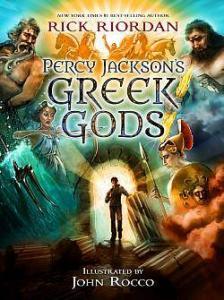
New York: Hyperion Books, 2014
In Percy Jackson's Greek Gods, using his signature irreverent style, Rick Riordan gives us the scoop on about 20 of the Greek Gods. For pleasing Percy Jackson fans, it is, to use the vernacular, da bomb. If that isn't enough, in August, 2015 Hyperion published Percy Jackson's Greek Heroes! As we might suspect, it's more of the same, only about heroes.
First, readers learn about the Greek creation story, Chaos, Gaea and Uranus (go ahead and snicker), along with the Titan children and grandchildren that came along. Riordan acknowledges the ick factor in siblings, even Titan siblings, marrying oneanother, but offers a reasonable explanation. Then come chapters with titles like "The Golden Age of Cannibalism," "The Olympians Bash Some Heads," "Hera Gets a Little Cuckoo," and "Ares, the Manly Man's Manly Man." You get the idea. All the stories are real Greek Myths, only with a little P.J. twist to make them fresh and appealing to the modern 9-14 year old set. Only Riordan can get away with Zeus channelling Joey from Friends with "How you doing?" after spiriting Europa away to Crete while disguised as a bull.
The illustrations are clear, beautiful, and a little similar to Michael Hague's work. They are scattered throughout the book in full page glory, and in smaller side bars and chapter headings, and are the tiniest bit scary. Bonus!
Elementary schools will want to invest in this encyclopedia sized volume if Riordan's fiction is in the collection. Middle school libraries will absolutely need this in their mythology section as it is acurate and engaging, with middle school humor at its finest.
Idaho Core Standards for Literature: Grades 6-8, Standards 2-9.
Dewey: 813.54 Interest Level: Grades 4-8
Awards and Reviews: Kirkus Reviews; School Library Journal; Voice of Youth Advocates.
Younger Readers might enjoy: Kronos the Titan Tells All: Tricked by the Kids by Eric Braun.
Older Readers and Teachers might like: Greek Mythology for Teens: Classic Myths in Today's World by Zachary Hamby.
Fiction pairing: Rick Riordan's Percy Jackson and the Olympians series and The Heroes of Olympus series.
On the Web:
Education Resources at http://www.rickriordan.com/educational-resources/teachers-guide.

New York: Houghton Mifflin Harcourt Publishing, 2015
It is hard to go wrong with the team of Steve Jenkins and Robin Page. They've written 16 excellent children's books together, and Egg: Nature's Perfect Package is no exception. From the color scheme to the structure and layout, this book is a pleasure! It is organized into sections that explain all things egg: who lays eggs; types, quantity and sizes of eggs; where animals lay eggs, what predators might eat those eggs and how the parents protect them; and on until finally we learn how the babies get out of the eggs. Readers discover that there are as many ways to lay, carry, and care for eggs as there are species that use them to reproduce.
The torn- and cut-paper collage illustrations throughout the book are clear and accurate, not to mention beautiful, and the intriguing text is spot-on for the target age group. At the end there is a fantastic glossary with pictures, along with a list of additional reading. This, and really any picture book from Jenkins and Page (or Jenkins on his own), is an essential part of an elementary school library collection.
Idaho Core Standards: Reading Standards for Informtional Text K-5: Grades K & 1, Standards 1-9; Grade 2, Standards 1, 3-7; Grade 3, Standards 1-8; Grade 4, Standards 1-5, 7-9.
Dewey: 591.468 Interest Level: Grades K-4
Awards and Reviews: Booklist, Kirkus Reviews, School Library Journal.
For your summer reading pleasure, a list of other Steve Jenkins titles to consider: Actual Size; Almost Gone; The Animal Book: A Collection of the Fastest, Fiercest, Toughest, Cleverest, Shyest - and Most Surprising - Animals on Earth; Animals in Flight; The Beetle Book; Big and Little; Biggest, Strongest, Fastest; Bones: Skeletons and How They Work; Crature Features: 25 Animals Explain Why They Look the Way They Do; Dogs and Cats; Down, Down, Down: A Journey to the Bottom of the Sea; Eye to Eye: How Animals See the World; Hottest, Coldest, Highest, Deepest; How Many Ways - Can You Catch a Fly?; How to Clean a Hippopotamus: A look at Unusual Animal Partnerships; How to Swallow a Pig - Step-by-Step Advice from the Animal Kingdom; I see a Kookaburra!: Discovering Animal Habitats Around the World; Just a Second: A Different Way to Look at Time; Life on Earth: The Story of Evolution; Living Color; Looking Down; Move!; My First Day; Never Smile at a Monkey: and 17 Other Important This to Remember; Prehistoric Actual Size; Sisters and Brothers: Sibling Relationships in the Animal World; Slap, Squeak and Scatter: How Animals Communicate; Time for a Bath; Time to Eat; Time to Sleep; The Top of the World: Climbing Mount Everest; What Do You Do When Something Wants to Eat You?; What Do You Do with a Tail Like This?
* Plus many of these titles are available in Spanish!
Fiction Pairing: Eat Like a Bear by April Pulley Sayre
On the Web:
San Diego Zoo Kids at http://kids.sandiegozoo.org. Animal themed games, activities, videos and information about all the animals at the San Diego Zoo!
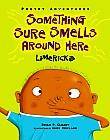
Minneapolis, MN: Millbrook Press, 2015
Along with National School Library Month, April is National Poetry Month (April is busy!), so what better time to talk about limericks? Something Sure Smells Around Hereis a book full of funny limericks with punchlines kids will get. Author Brian Cleary uses puns, idioms, and other clever wordplay, mixing poetry and comedy in a way that will appeal to students and adults alike. Even better, Cleary uses roads less traveled in crafting his limericks; none of them start with "There once was a boy from...," and, thankfully, no one is from Nantucket.
This introduction to limericks opens with an explanation of structure of a limerick and the important elements of writing one. Cleary points out that a limerick is a short and concise story - each one has a beginning, middle, and end, which is usually a punchline. He even wraps up this collection with an incomplete limerick to start would-be poets on 5-lined adventures of their own.
Other plusses: ELL teachers have praised Something Sure Smells for its use of puns and idioms, two particularly difficult concepts for English language learners to master; the artwork complements and supports the poetry; it includes recommendations for further reading; it's a lighthearted introduction to a poetry unit; and is a great study for use of beat and rhythm in language.
Students that enjoy Jack Prelutsky's books will also enjoy this volume of poetry. It is a must-add to any elementary and possibly middle school poetry section.
Idaho Core Standards: Reading Standards for Literature: Grade 3, Standards 1, 4, 5, 7; Grade 4, Standards 1, 5, 6; Grade 5, Standards 1, 2, 4, 5, 7, 9; and Grade 6, Standards 1, 2, 4, 5.
Dewey: 808.1 Interest Level: Grades 3-6
Awards and Reviews: Booklist; Kirkus Reviews; School Library Journal.
Middle school poets might like: Immersed in Verse: An Informative, Slightly Irreverant & Totally Tremendous Guide to Living the Poet's Life by Allan Wolf.
Older poets might like: Beauty Poetry: "She Walks in Beauty" by Sheila Griffin Llanas.
Fiction Pairings: Hate That Cat and Love That Dog by Sharon Creech.
On the Web:
The World of Brian Cleary invites us to explore Brian's office. Visitors can rifle through his file cabinet, find the Word of the Week and the Poem of the Week in his desk drawers, and find interactive books hanging on the wall. Librarians can find information on school visits, too. Super fun!
Event: To mark National Poetry Month, schools can participate in Poem in Your Pocket Day on April 30, 2015. Elementary students could make a pocket to carry their poems for the day and older students can tweet their favorite poems at #pocketpoem. Get more clever ideas to use for your school's celebration athttp://www.poets.org/national-poetry-month/poem-your-pocket-day.
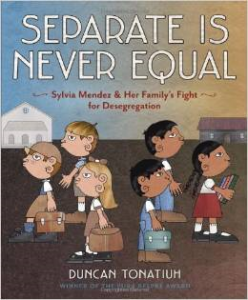
New York: Abram's Books for Young Readers, 2014
With the 50th anniversary of the Bloody Sunday march from Selma to Montgomery upon us, there has been a lot of attention on the brave individuals who fought for civil rights in the South. There was a lesser-known civil rights struggle happening 20 years earlier on the West Coast, too. Separate is Never Equal tells the story of Sylvia Mendez's family who fought to integrate schools in California in the 1940's. Much like the "separate but equal" schools of the south, some school districts in California ran schools for students of Hispanic descent that were separate, but certainly not equal.
Our story opens with Sylvia Mendez attending an integrated elementary school and being bullied by another student because she is Hispanic. Understandably, she tells her mother she does not want to return, but her mother reminds Sylvia how she came to attend that school. We flash back to Sylvia and her family moving to Westminster, California, where the family leased a farm and would be working their own place rather than working as a hired hand. Sylvia looks forward to starting school at the local elementary school with her siblings and cousins. However, she is turned away from the beautifully maintained public school and sent to the Mexican school.
When Mr. Mendez learns about that turn of events, he starts asking questions: why must the children go to the Mexican school? It is not located on their side of town, the family are American citizens, and the children speak perfect English. As he worked his way up the school district chain of command, not one could satisfactorily answer his questions. One day, while collecting signatures for a petition, Mr. Mendez met a man who suggested filing a lawsuit. And so he found a lawyer and sued the Westminster School District. After several years in court, in June of 1947, the governor of Californa signed a law integrating the schools in California.
This beautiful picture book with interesting, textured illustrations, tells Sylvia's story in straight-forward language. The ugliness of "separate but equal" is clear, but not too graphic, making this an excellent read-aloud. Many children will understand Sylvia's bewilderment and hurt feelings as she realizes that she is not welcomed by everyone at her school, and they will enjoy the happy, but not perfect, ending.
Includes author's note, photos, glossary, bibliography, and index.
Idaho Core Standards: Reading Standards for Informational Text K-5: Grades 1-4; Standards 1-10.
Dewey: 379.2 Interest Level: Gr. 1-4
Awards & Reviews: Booklist; Bulletin of the Center for Children's Books; Horn Book; Horn Book Guide; Kirkus Reviews starred; Publishers Weekly; Pura Belpre Illustrator Honor 2015; Robert F. Sibert Informational Book Honor 2015; School Library Journal starred.
Middle School Readers might like: Latino American Folk Talkes edited by Thomas A. Green.
Fiction Pairing: Esperanza Rising by Pam Munoz Ryan.
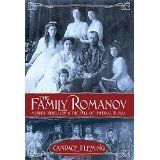
New York: Schwartz & Wade Books, an imprint of Random House, 2014
It is a skilled writer that can keep readers in suspense, even when they know the outcome of the story. Candice Fleming tells this compelling story of the last ruling Romanovs, and helps us make sense of the situation by taking a few pages at the beginning to explain some aspects of Russian protocol and custom to do with the characters and the timeline.
Throughout the story we learn about Nicolas' and Alexandra's incompetence exhibited in one bad, thoughtless decision after another in their attempt to govern Russia. However, they were easily manipulated and put their faith in the wrong people, and were much more interested in raising their family and enjoying life than steering their empire through the dark times of the early 20th Century. Nicolas is not fully to blame, though, as he had no Tsar training; his father refused to teach him how to rule. It seems no one really wanted Nicolas to become Tsar, least of all Nicolas.
To balance the story, Fleming includes excerpts from resources and writings of Russians outside the nobility. Set apart from the rest of the text, the testimonies from "Beyond the Palace Gates" introduce us to peasants, factory workers, children, authors and others whose stories provide a stark contrast to the lives of the Tsar's family and friends. The abject poverty in which the Tsar's subjects lived is shocking; it is easy to see why they revolted.
Although Nicolas and Alexandra might deserve a good slap to snap them out of their foolishness, they are not unsympathetic characters. We get the feeling from this account that they were more clueless than malicious. The Romanovs were a close and loving family and seemed to be liked by those that knew them personally. Even after the revolution, many of the guards that kept them prisoner liked them, and some of their servants even chose to be imprisoned with them rather than leave them. They endured illness, heartbreak, and disappointment, just like everyone. The family was deeply religious, and were even canonized by the Russian Orthodox Church after their deaths.
This book, if taken as a class project, provides lots of questions for class or small group discussion. Would Russia still be ruled by a monarchy if Nicolas II had made better decisions? If he had been more aware of the state of his military, would Russia have conceded in WWI? If he had taken the time to notice the plight of lower class Russians and helped them, would Lenin have come to power? Those "what if's" are impossible to answer with certainty, but knowing its origins can spark a thoughtful discussion on monarchy, communism and democracy.
The Family Romanov is certainly deserving of the awards and buzz it has received and should be included in high school library collections. It is full of photographs of the people and places mentioned, maps, diagrams and web resources. It includes a complete bibliography and a section addressing primary sources.
Idaho Core Standards: Reading Standards for Literacy in History/Social Studies: Grades 9-10, Standards 1-6, 8, 9. Grades 11-12, Standards 1-9.
Dewey: 947.08 Interest Level: YA
Awards and Reviews: Booklist starred; Horn Book Starred; Library Media Connection; Publishers Weekly starred; School Library Journal starred; Voice of Youth Advocates (VOYA) starred; Sibert Informational Book Honor; YALSA Award for Excellence in Nonfiction for Young Adults finalist.
Middle school readers might like: Grand Duchess Anastasia Romanov by Mary Englar.
Elementary readers might like: Look What Came from Russia by Miles Harvey.
Fiction Pairing: Dr. Zhivago by Boris Pasternak. (Be sure to check out the CIA back story that goes along with this novel!)
On the Web:
Alexander Palace Time Machine includes photos, maps, interview and interrogation transcripts, and much more. Good source for primary documents.
Film: BBC - Russian Revolution (1840-1921) - available in 8-12 minute segments on YouTube.
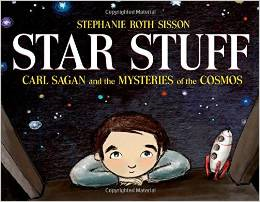
New York: Roaring Book Press, 2014
Wowie! Star Stuff is a fantastic biographical picture book about the one and only Carl Sagan. Our story begins, appropriately, in the Milky Way galaxy and in the first few pages we zero in on young Carl in his apartment in Brooklyn, NY. We follow Carl as his curiosity and, as luck would have it, the 1939 World's Fair in New York City, lead him to the world of science and space exploration. There is even a mention of Carl reading about stars in his local library - hurray!
As Carl grows up, he continues his education and becomes Dr. Carl Sagan. He goes on to make important contributions to science and space exploration, teach aspiring scientists, write books, and work on projects with NASA like Viking, Mariner, and Voyager. Then comes the television show, Cosmos, and the turtleneck-sporting Carl Sagan that becomes a household name.
Oddly, although Star Stuff hits the highlights of Sagan's professional life, it does not metion the dates of his birth (1934) and death (1996), even in the end notes. On the bright side, it presents his life as a series of steps that could be followed by lots of young people who are curious like young Carl. The emphasis is on studying and working hard to make a career, rather than on any special talent he possessed, making a career in science feel attainable for any interested student.
This picture book is engaging with a variety of layout designs and spare, charming text. Plus it contains a very cool vertical foldout that shows young Carl's imagination stretching from a library reading room to the sun. An author's note, end notes and bibliography detail the solid sources that are the foundation of the book. Star Stuff is a must-have for any elementary school library!
Idaho Core Reading Standards for Informational Text: Grades K-2, Standards 1-10.
Dewey: 520.92 Interest Level: K-2
Awards and Reviews: Booklist; Kirkus starred; Publishers Weekly; School Library Journal starred.
Middle School readers might like: The Adventures of Sojourner: The Mission to Mars that Thrilled the Worldby Susi Trautmann Wunsch.
Young Adult readers might like: Carl Sagan by Gabrielle Borisovna.
Fiction Pairing: John Carter Barsoom Series by Edgar Rice Burroughs (one of Carl Sagan's favorites as a boy).
Film: Andorfer, Gregory, et al., Malone, Adrian, et al. (1980, TV Mini-Series). Cosmos. USA: KCET & Carl Sagan Productions, 1980. Distributed by Public Broadcasting Service (TV) & Bright Vision Entertainment (DVD).
Film: Braga, Brannon, et al., Braga, Brannon & Ann Druyan (2014, TV Mini-Series). Cosmos: A Spacetime Odyssey. USA: Cosmos Studios & Fuzzy Door Productions, et al., 2014. Distributed by Fox Network and National Geographic Channel (TV).
On the Web:
The Carl Sagan Portal at http://www.carlsagan.com/.
Finding Our Place in the Cosmos: From Galileo to Sagan and Beyond through the Library of Congress athttp://www.loc.gov/collections/finding-our-place-in-the-cosmos-with-carl-sagan/about-this-collection/.
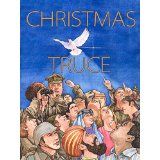
Friday Harbor, WA: Skyhook Press, 2014
The story of the Christmas Truce of 1914 is truly inspirational and has been told in many different ways over the years. First through newspaper articles, then in books, music, theater, and movies. Shepard's retelling is in the form of a letter from a British soldier to his sister. The letter, although fictionalized, draws from actual letters from soldiers who participated, so let's put it in with the non-fiction here, even if it is with fiction in the stacks.
Along with describing the Christmas celebration with German troops, our letter-writing soldier touches on the conditions in which the soldiers lived, and the hardships of life in the trenches. I addition, he decribes the somewhat mixed feelings with which the enemy soldiers are regarded. On one hand they hate this enemy that has forced them into war and killed so many friends; on the other hand, they feel they have a lot in common with the soldiers stuck in the opposing trenches, enduring the same miserable war. Shepard skillfully shows the determination of the British soldiers to do their duty and win the war, along with their capacity for empathy for their German counterparts.
Wendy Edelson's illustrations are beautifully rendered water colors in brilliant blue, with the khaki, brown and grey of military uniforms. There are occasional brightly colored and warmly lit images to set apart our narrator's thoughts of home. They are a perfect addition to the story.
While many school libraries already own some version of the 1914 truce story, this appealing mix of fact, historical fiction, and personal point of view would be a strong addition to an elementary holiday collection, especially since there is a readers theater script available . Plus, this book doubles as historical fiction the rest of the year.
Idaho Core Standards: Reading Standards for Literature: Grades 3-5, Standards 1-7, 9.
Dewey: E Interest Level: Grades 3-5
Awards and Reviews: Kirkus Reviews
Middle school readers might like: Truce: The Day the Soldiers Stopped Fighting by Jim Murphy
Older readers might enjoy: Silent Night: The Story of the World War I Christmas Truce by Stanley Weintraub
Fiction Pairings: And the Soldiers Sang by J. Patrick Lewis (elementary) & All Quiet on the Western Frontby Erich M. Remarque (YA)
Film: Lindahl, Carl H. et. al., Joyanti, Vikram. (2002, TV Movie). The Christmas Truce. England: Fulcrum TV, 2002. Distributed in United States by History Channel.
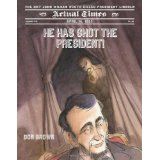
New York: Roaring Books Press, 2014
Better late than never! November's non-fiction book is fashionably late, but since it is a series, perhaps it is worth the wait. He Has Shot the President is the fifth book in Don Brown's Actual Times series, and he, once again, uses the best combination of narrative story-telling, factual information, and expressive illustrations.
The book opens by setting the stage with a few paragraphs of back story on President Abraham Lincoln, John Wilkes Booth, and the Civil War, then moves on to a precise chonology of each man's April 14th. We learn about Booth's original plan to kidnap the President and how it turns into a plan for murder. As the story alternates between Lincoln's and Booth's activities, we see how each detail of the assassination falls into place, and how each mistake leads to the capture of Booth and his gang of conspirators.
As Lincoln lays dying and Booth makes his get away, we follow the missions of the conspirators and their varying degrees of success. Brown follows each to his or her end and, along the way, we learn lesser known facts about what really happened on April 14, 1865 and the following days.
With his gift for portraying emotion in his illustrations, Brown shows the feel of each moment in the story using watercolor and ink. John Wilkes Booth looks a bit unhinged, and even the horses look sad after Lincoln dies.
He Has Shot the President and other titles in the Actual Times series are a worth-while addition to an elementary or middle school library. With an objective voice and accurate, detailed facts, they are spot-on informational texts for upper elementary. Plus, they are fun reading!
Other titles in the Action Times series include: Let it Begin Here! April 19, 1775: The Day the American Revolution Began; All Stations! Distress! April 15, 1912: The Day the Titanic Sank; Gold! Gold from the American River! January 24, 1848: The Day the Gold Rush Began; and America is Under Attack: September 11, 2001: The Day the Towers Fell; all by Don Brown.
Idaho Core Standards: Reading Standards for Inforamational Text:
Grade 3, Standards 1-5, 7-9; Grade 4, Standards 1-7, 9; Grade 5, Standards 1-6, 9; Grade 6, Standards 1-7, 9; and Grade 7, Standards 1-5, 7-9.
Dewey: 973.7 Interest Level: Grades 3-7
Awards and Reviews: Booklist; Bulletin of the Center for Children's Books; Horn Book Guide starred; Kirkus Reviews; Library Media Connection; Publishers Weekly starred; School Library Journal.
Older readers might like: Chasing Lincoln's Killer by James L. Swanson.
Fiction Pairing: An Acquaintance with Darkness by Ann Rinaldi.
Film: Abramson, Jody, et al. & Kunhhyardt, P.W. and Edgar, J.A. (1992). Lincoln. United States: PBS.
On the Web:
Learn more about Abraham Lincoln, the Civil War, and Reconstruction at the Library of Congress's American History digital collection of primary source documents and artifacts.
